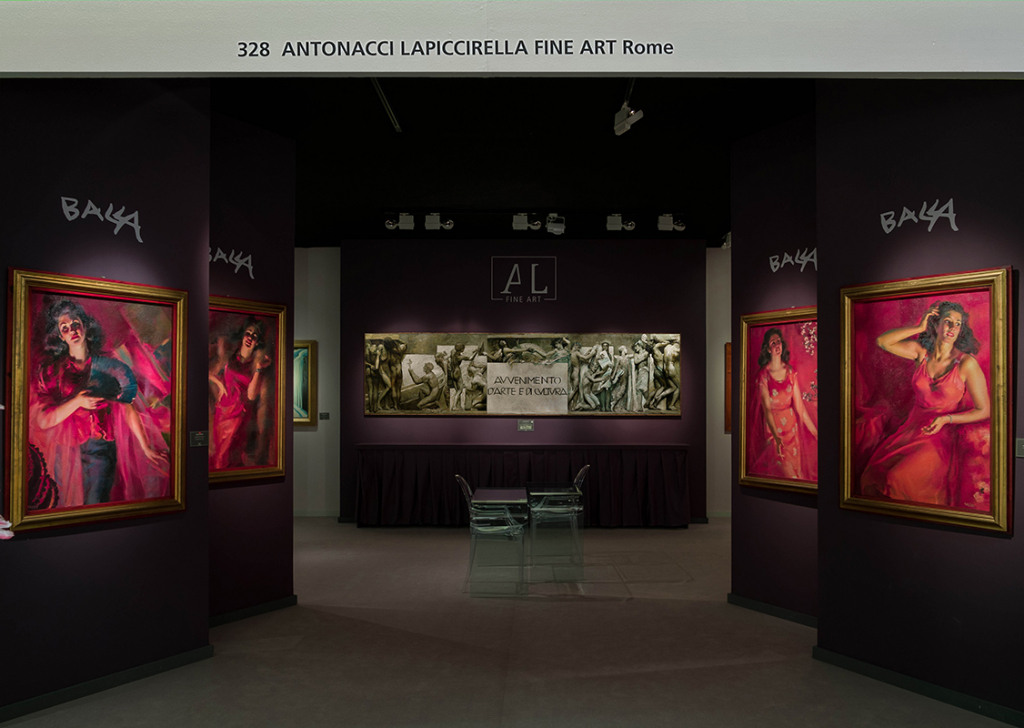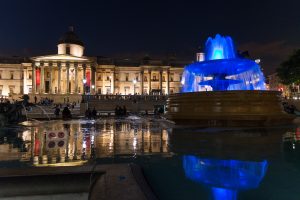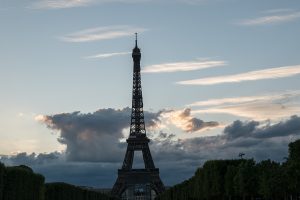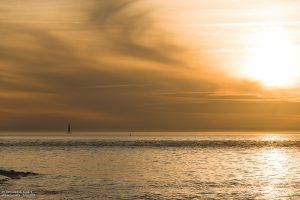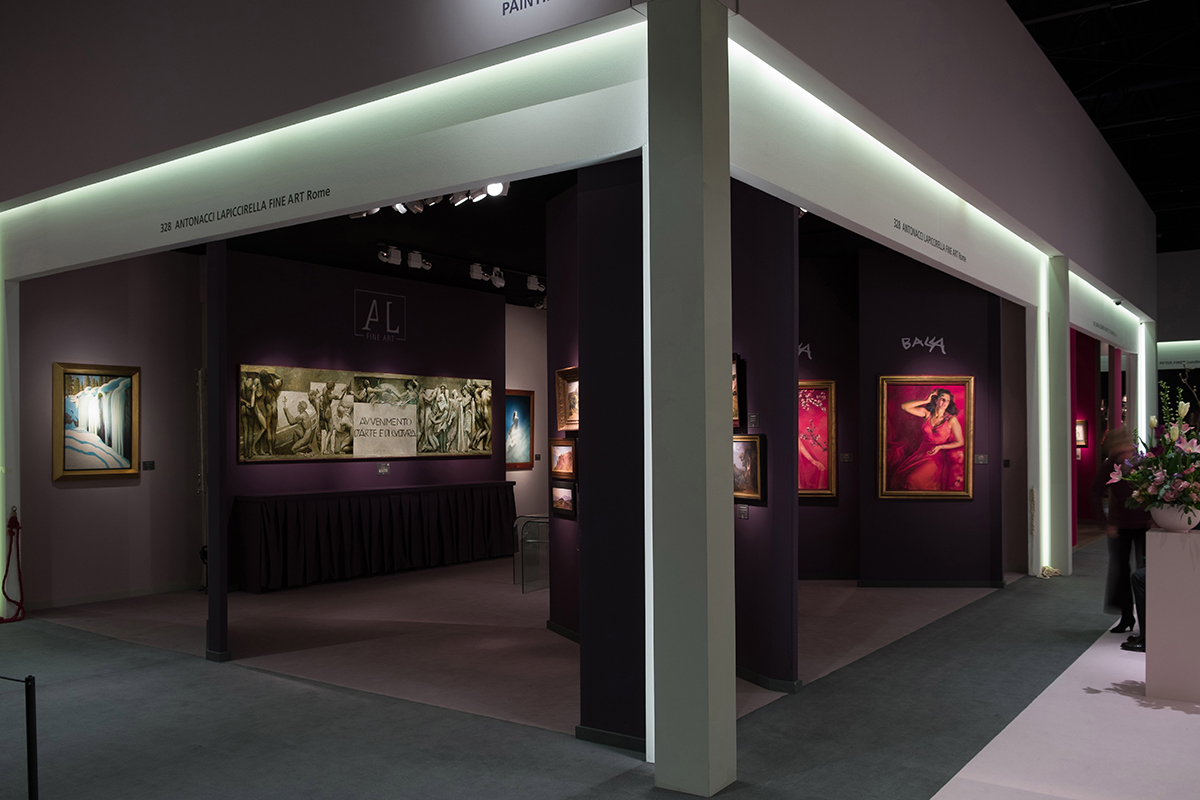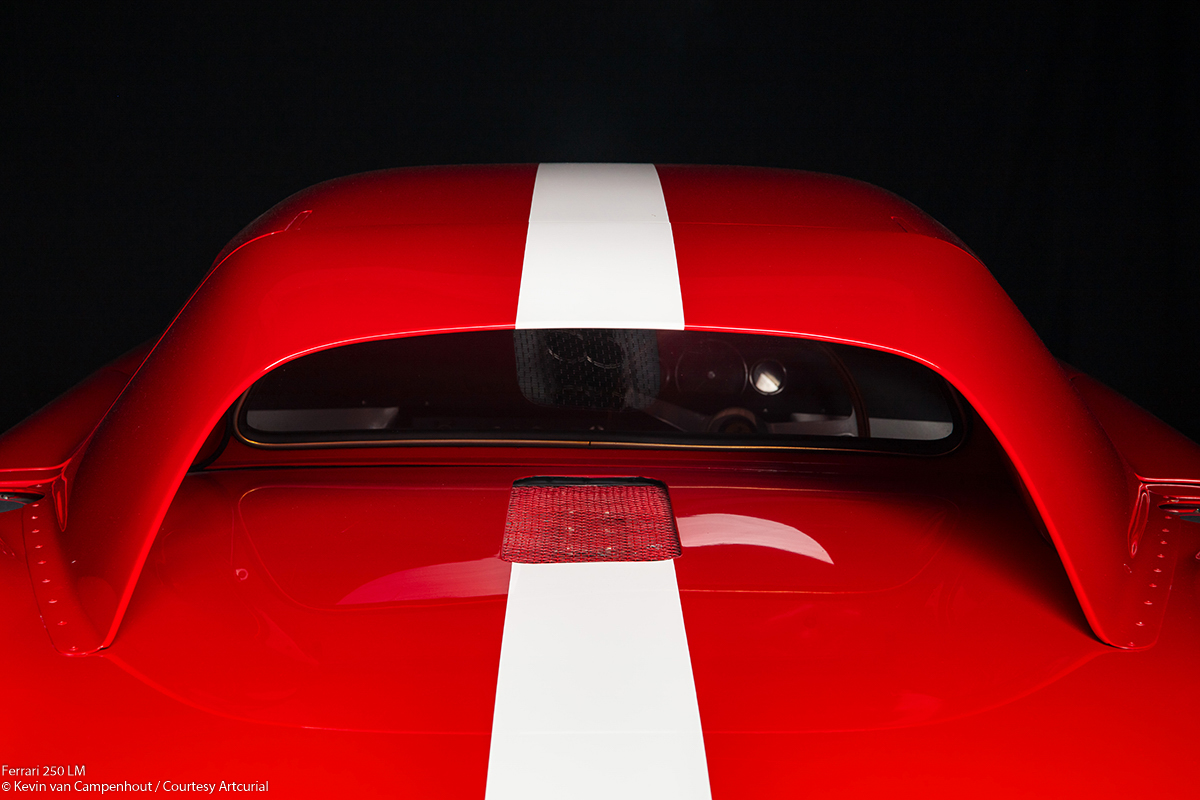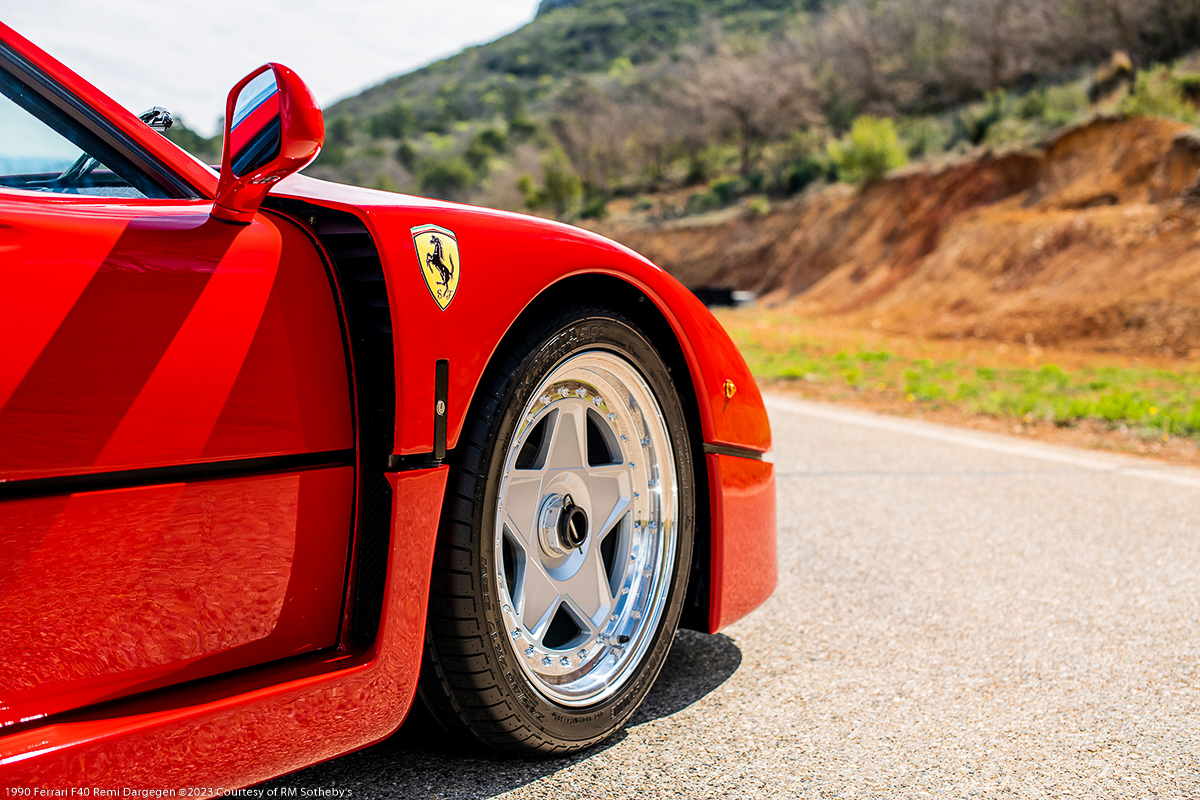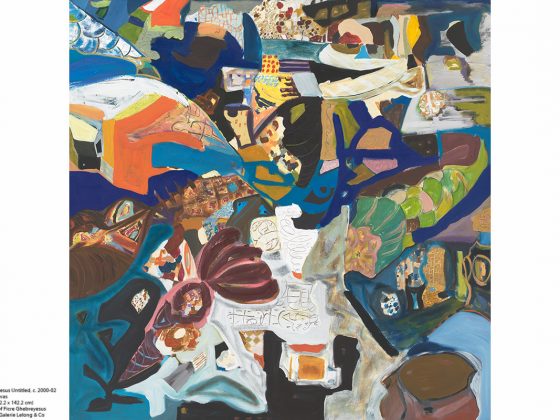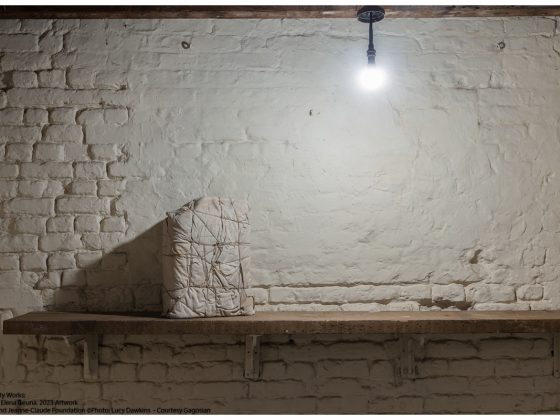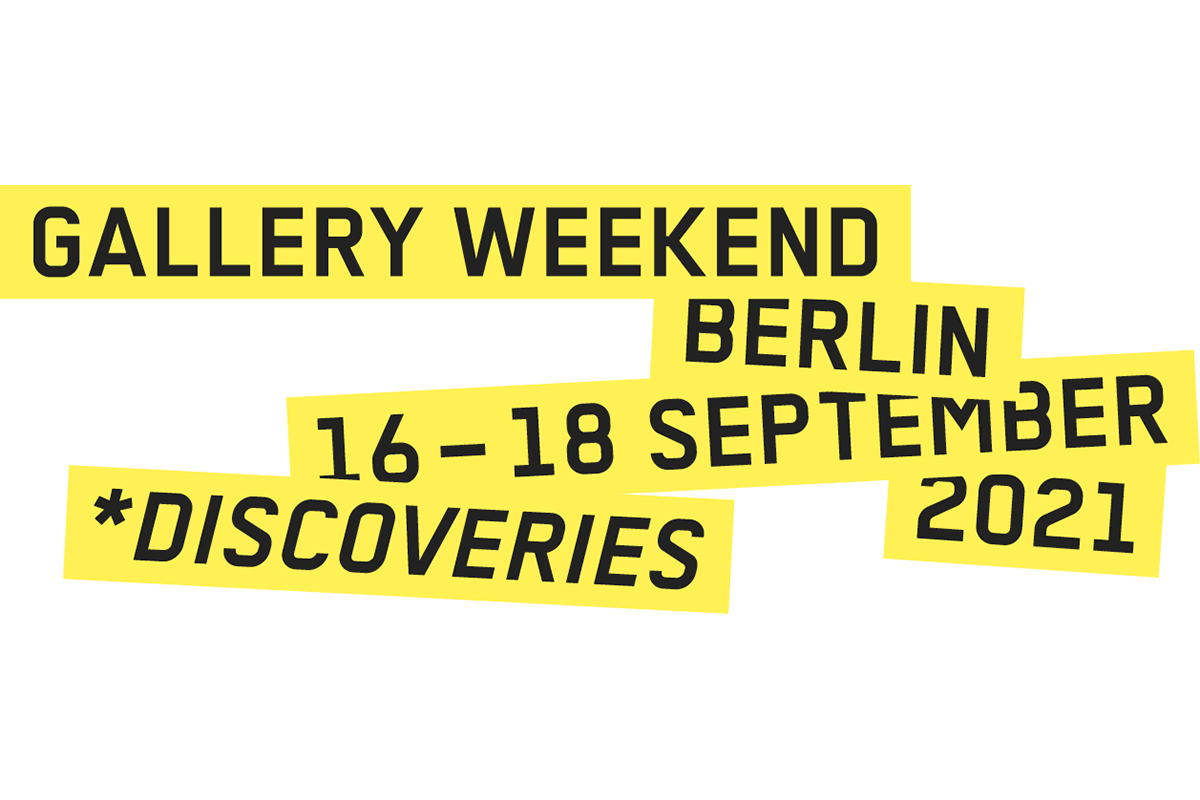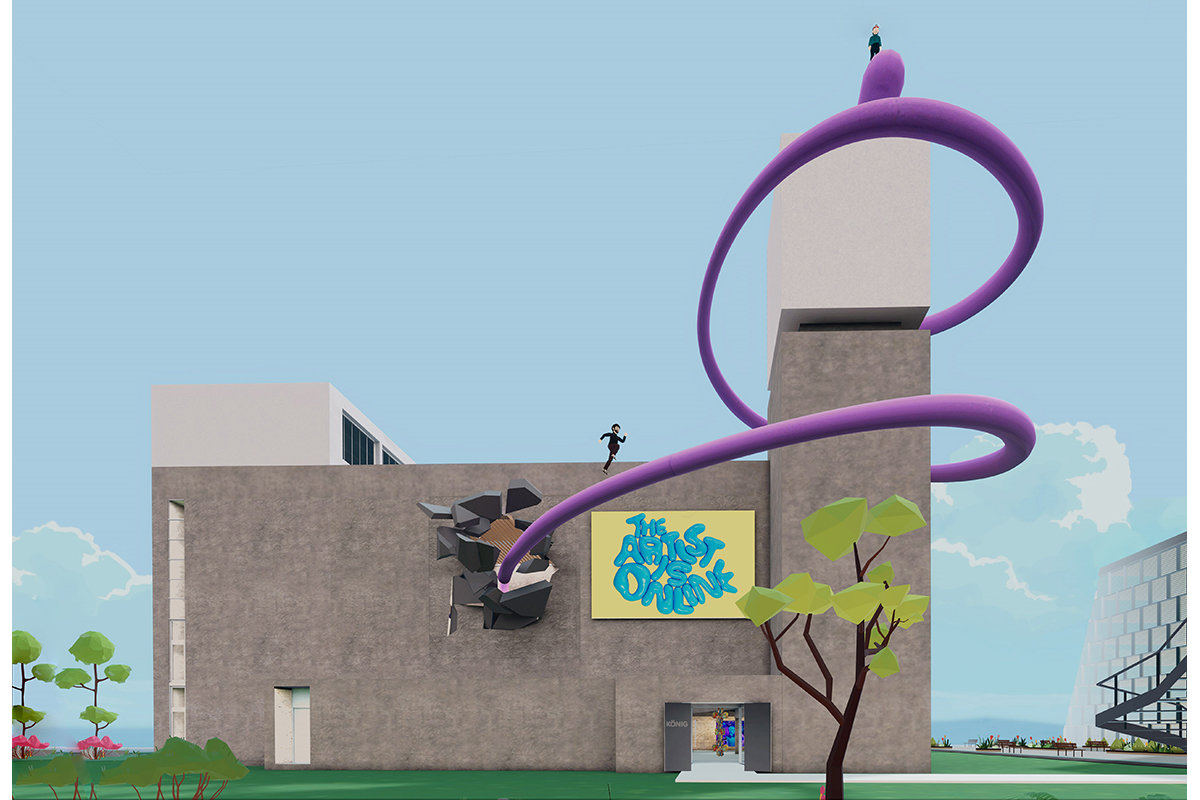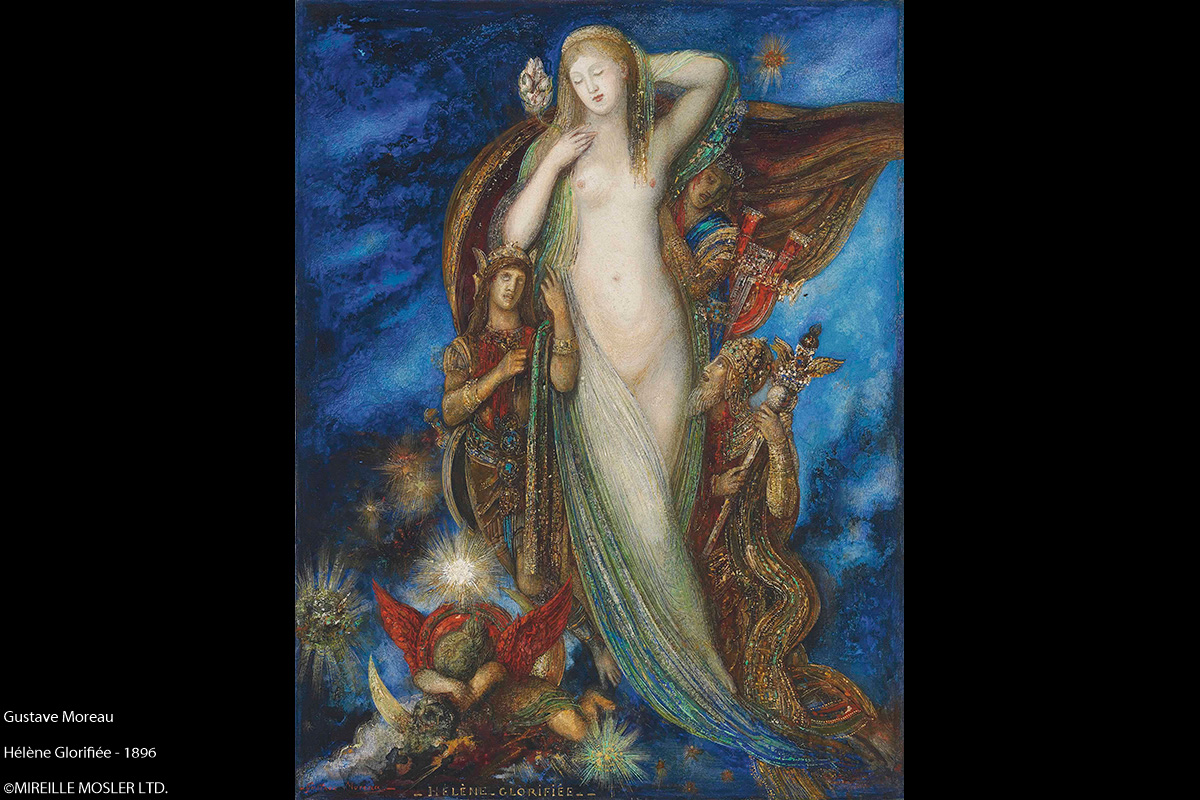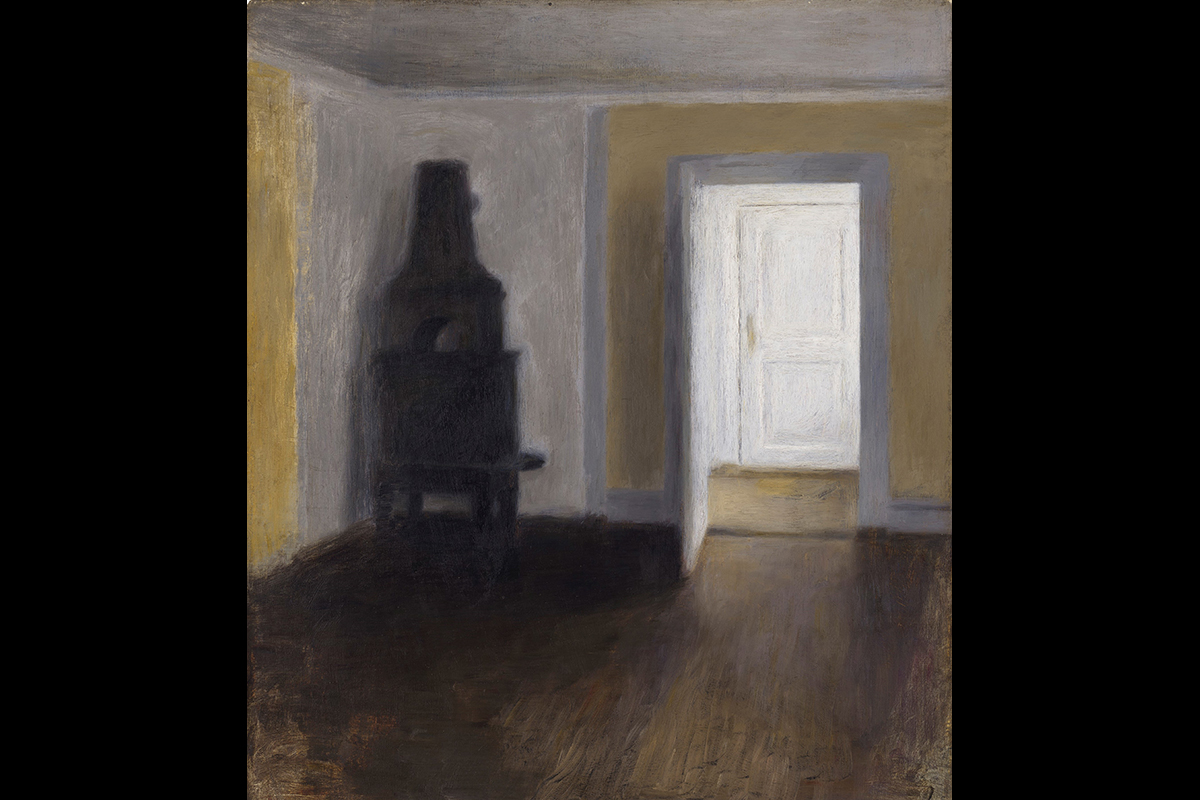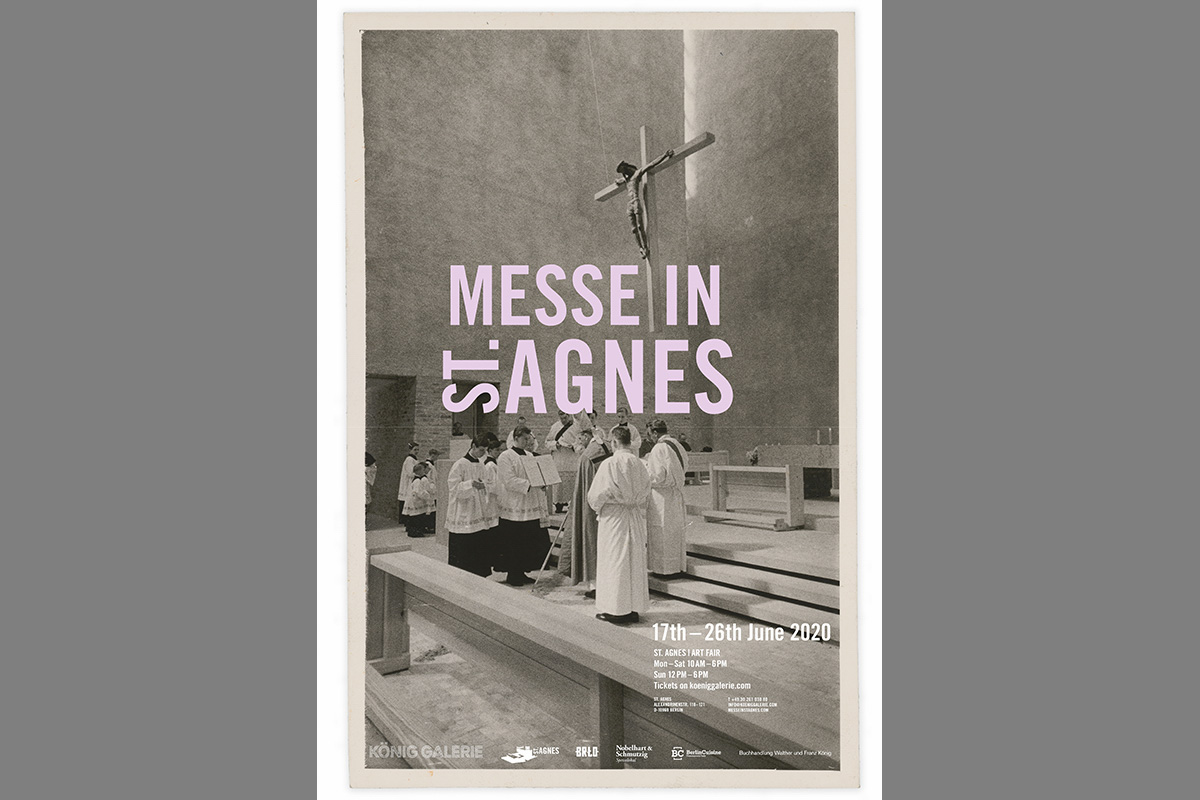Giacomo Balla
One of the Leading Figures of Futurism Anticipates Pop Art .
At this year’s edition of TEFAF Maastrich, Antonacci Lapiccirella Fine Art ( Rome ) presented a masterpiece by Giacomo BALLA , Le quattro stagioni (The Four Seasons). These four paintings, produced by the artist between 1939 and ’40, surprised the fair’s audience with their innovative and forward – thinking character. These four extraordinary canvases confirm that Balla, a Futurist icon, was a tireless avant – garde exponent. Creating an original new language which had nothing in common with other Italian or European experiments of that period, the artist anticipated the themes of Pop Art. Drawing on the popular imagery of magazines, comics , and television , Balla used a technical device that simulates the effects of a typographer’s dot screen on the canvas, to make his longing to immerse himself in popular culture even more explicit. With this new avant – garde concept , he did what Lichtenstein would do many years later, turning the comic book into a work of art.
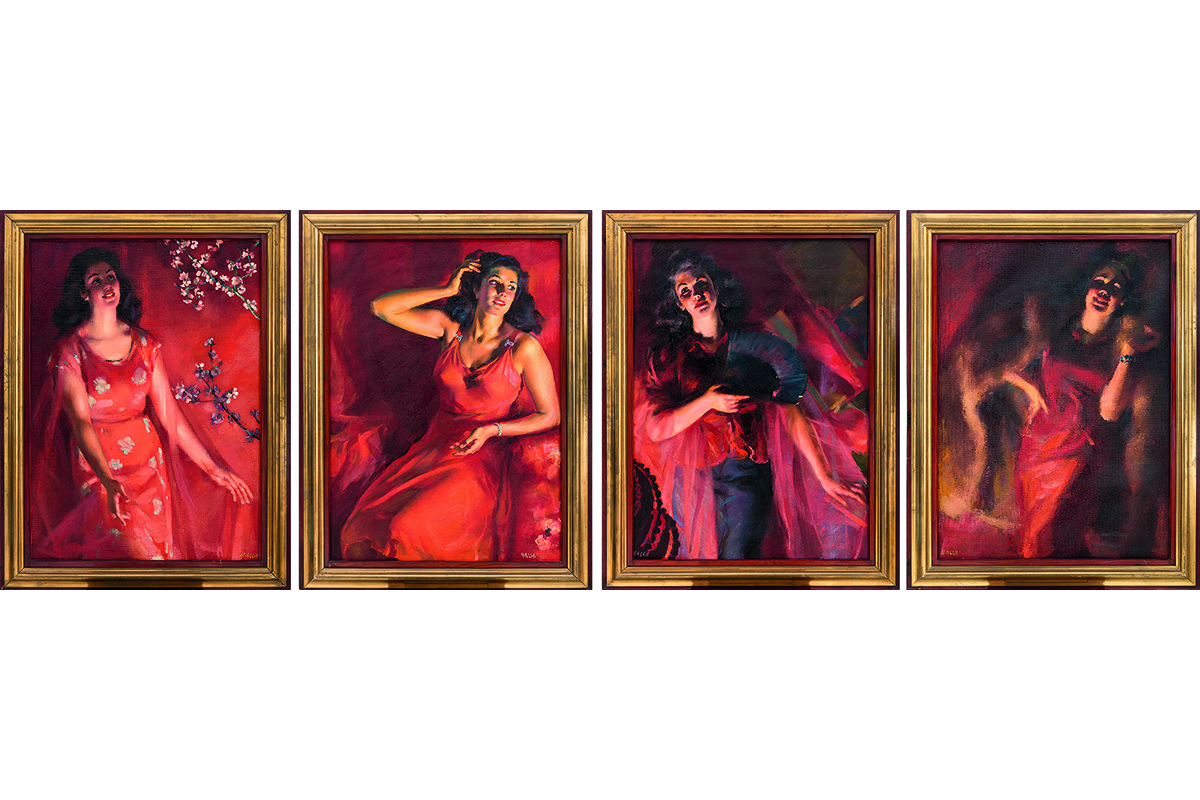
On Preview Day the gallery Antonacci Lapiccirella Fine Art ( Rome ) made, among others, an important sale of Giacomo Balla’s, The Four Seasons (1940) to a private European collector. The asking price was around 1 million EUR. The client discovered the four exceptional red paintings, that anticipate American Pop Art, during the Early Access Day, and immediately fell in love with the work by the leading Italian Futurist artist.
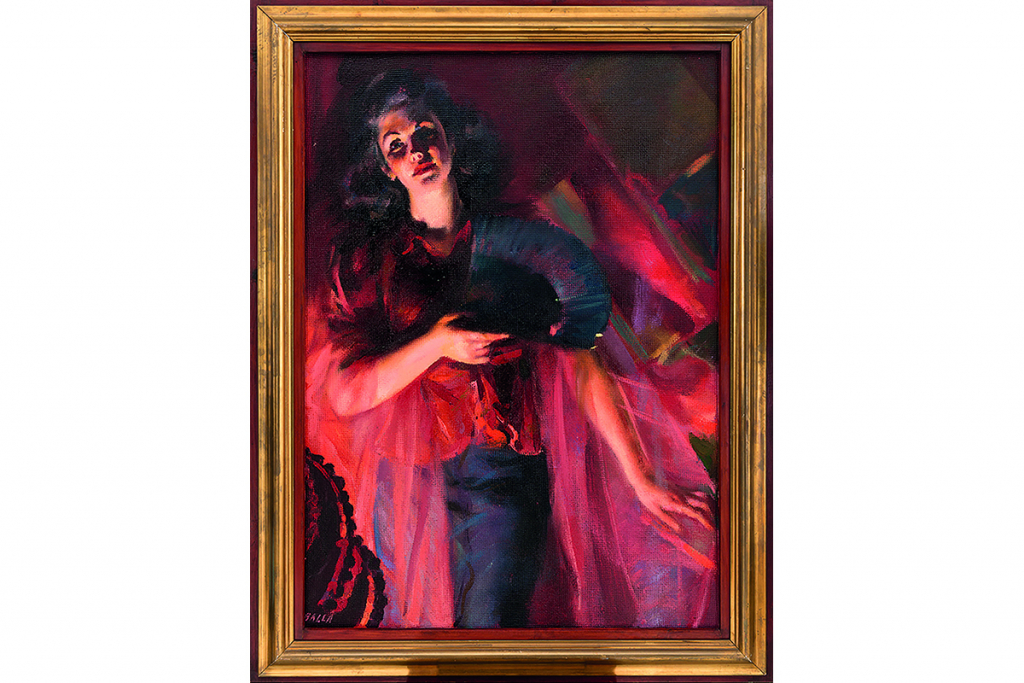
The Four Seasons. Autumn, 1940
Oil on board and net, 110,5 x 80 cm Signed lower right: BALLA
On the back: AUTUNNO BALLA Frame made by the artist: 129 x 99 cm
©Courtesy: Antonacci Lapiccirella Fine Art ( Rome )
Giacomo BALLA (Turin, 1871 – Rome 1958)
Le quattro stagioni (The four Seasons ) , 1940
Also known as Le Quattro Stagioni in Rosso ( The Four Seasons in Red ), these four paintings realized by Giacomo Balla between 1939 and ’40 depict the young Giuliana Canuzzi, a friend of his family, and a daughter of the Colonel who lived on the 2nd floor of Via Oslavia 39B. The beautiful model, little more than 18 years old at the time, is portrayed in four different poses, each time accompanied by different attributes to describe the season represented: flowers on her dress and plum blossom branches for Spring ; what looks like a poppy sketched in the lower right – hand corner for Summer, her smooth skin lit by the warm sun; instead, her face is pensive, serious, and somehow, with her right hand holding a fan to depict Autumn; a fur coat thrown over her shoulders, a cheerful laugh, and dark shadows used to describe Winter .
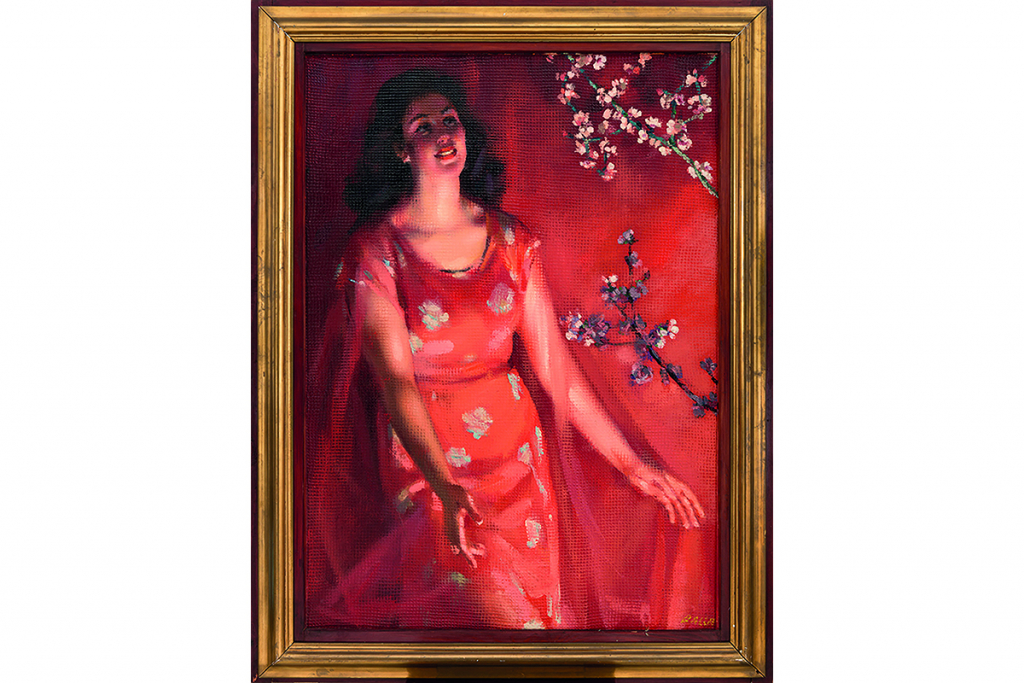
The Four Seasons. Spring, 1940
Oil on board and net, 110 x 80 cm Signed lower right: BALLA On the back: PRIMAVERA BALLA 1940 e 15 prove di posa Frame made by the artist: 129 x 99 cm
©Courtesy: Antonacci Lapiccirella Fine Art ( Rome )
“for the painting of Winter father wanted her to smoke to make the shadows bluer; now he is passionate about bringing out the splendour of the reds enhanced by deep, strong shadows.” – Elica Balla, 1986
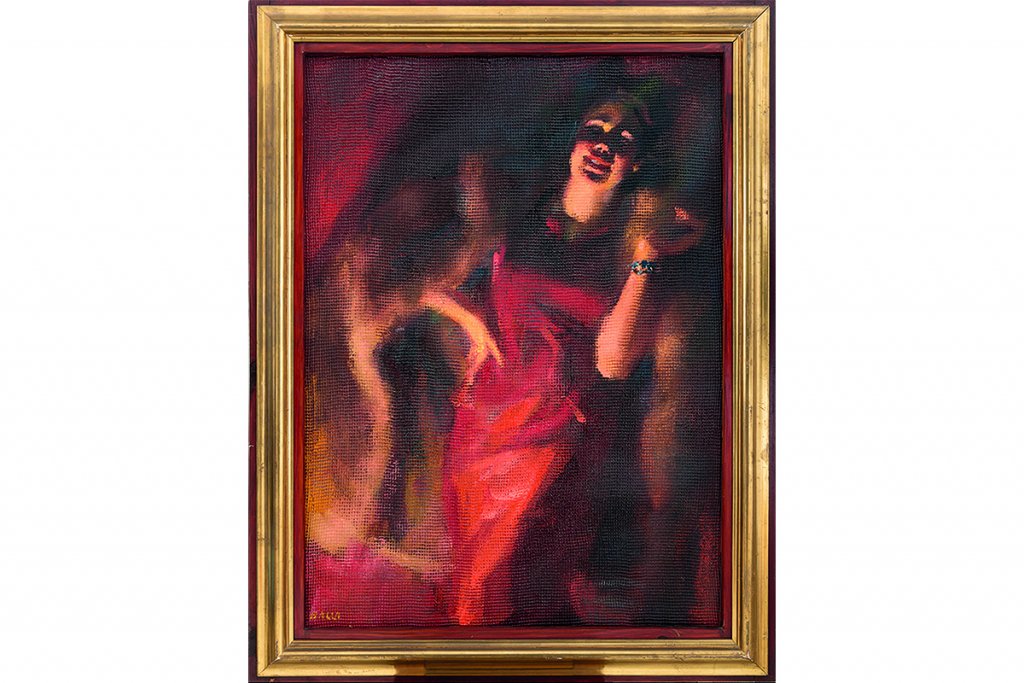
The Four Seasons. Winter, 1939
Oil on board and net, 110,4 x 80 cm Signed lower right: BALLA On the back: INVERNO BALLA|1939|BALLA 1939 Frame made by the artist: 129 x 99 cm
©Courtesy: Antonacci Lapiccirella Fine Art ( Rome )
The choice of the colour in the Seasons is not accidental. As Maurizio Fagiolo said,
“Red was one of his fixations. It is the colour of ‘Boccioni’s Hand’, the forerunner of sculpture. It is the colour of Futurist writing paper. Along with black, it is the colour of those humanitarian illusions of the first decade of the century. Balla in red: symbolizing vitality, energy, revolution even.” *2
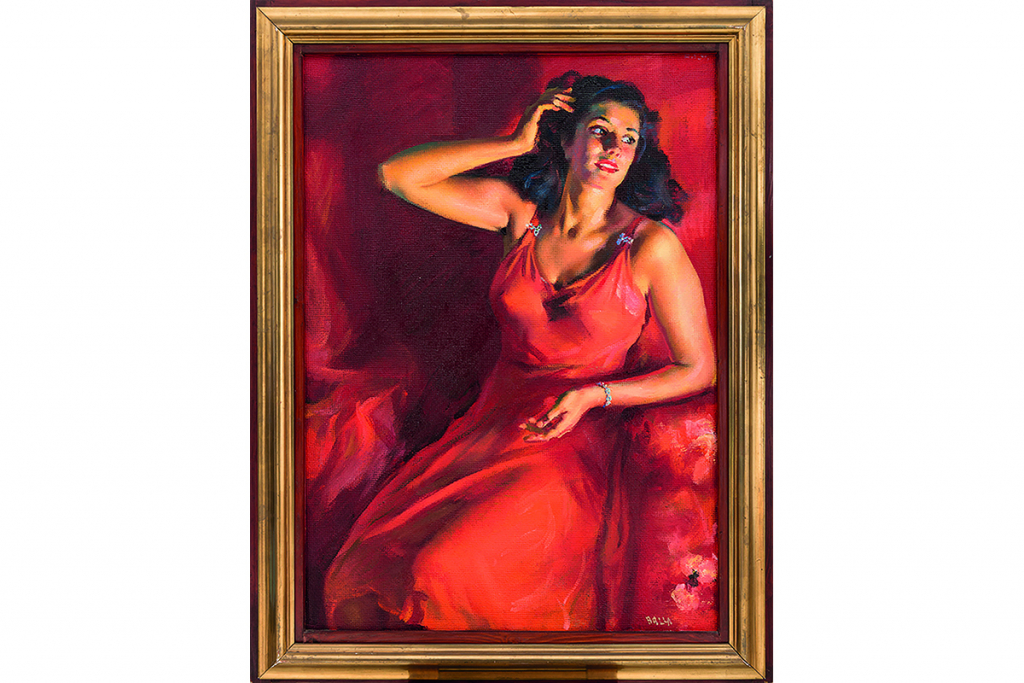
The Four Seasons. Summer, 1940
Oil on board and net, 110 x 80 cm Signed lower right: BALLA On the back: ESTATE BALLA 1940 e 29 sedute di posa Frame made by the artist: 129 x 99 cm
©Courtesy: Antonacci Lapiccirella Fine Art ( Rome )
The vitality this colour is drenched in is reinforced by the fact that Balla painted the four works following a bad road accident in which he risked his life. The red is that life which has returned, the light, his eternal quest for colours, colours in light.
1- 1986, E. Balla, Con Balla , Multhipla edizioni, Milan, vol. III, pp. 141, 146.
*2 M. Fagiolo Dell’Arco, catalogue of the exhibition Ballrossi. Opere di Balla in Rosso, Rome 1986.
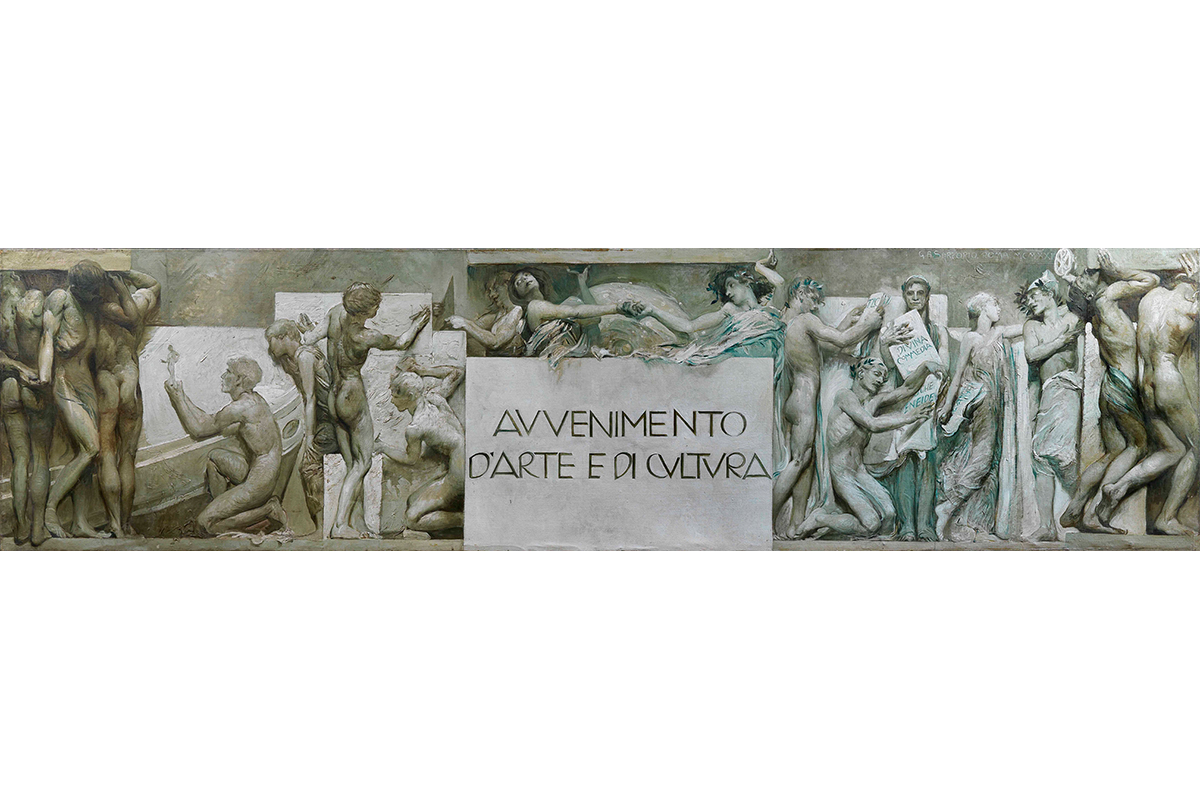
Panel of Avvenimento d’arte e di cultura (1906 – 23).
©Courtesy: Antonacci Lapiccirella Fine Art ( Rome )
The Gallery also presents among others, two wonderfull paintings: a panel of Avvenimento d’arte e di cultura (1906 – 23), part of a frieze by Giulio Aristide SARTORIO. This is the third and largest of three parts of the gallery’s important rediscovery of which two panels were showcased at TEFAF Maastricht 2022 and that were recently acquired by the prestigious Musée d’Orsay in Paris.
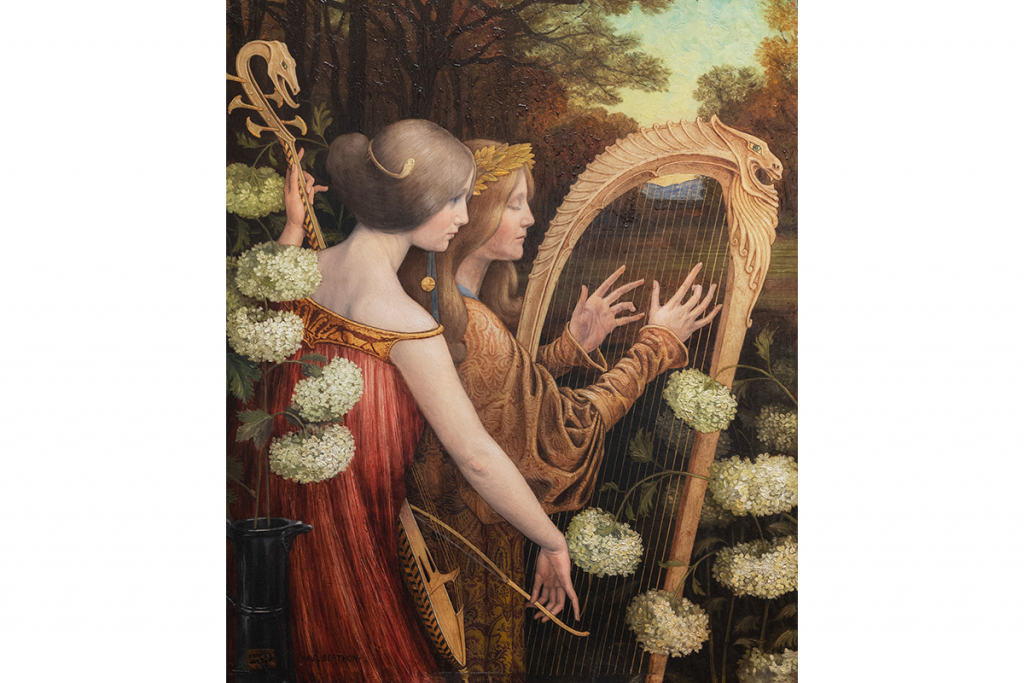
Les Musiciennes dans un parc, 1905
©Courtesy: Antonacci Lapiccirella Fine Art ( Rome )
And the only known painting on panel by Paul Louis Joseph BERTHON, the celebrated French Symbolist and lithograph artist. The rediscovery of Les Musiciennes dans un parc (Musicians in a park) is a “one-off” in the artist’s artistic production and was exhibited at the Palais-Salon in Paris in 1906.
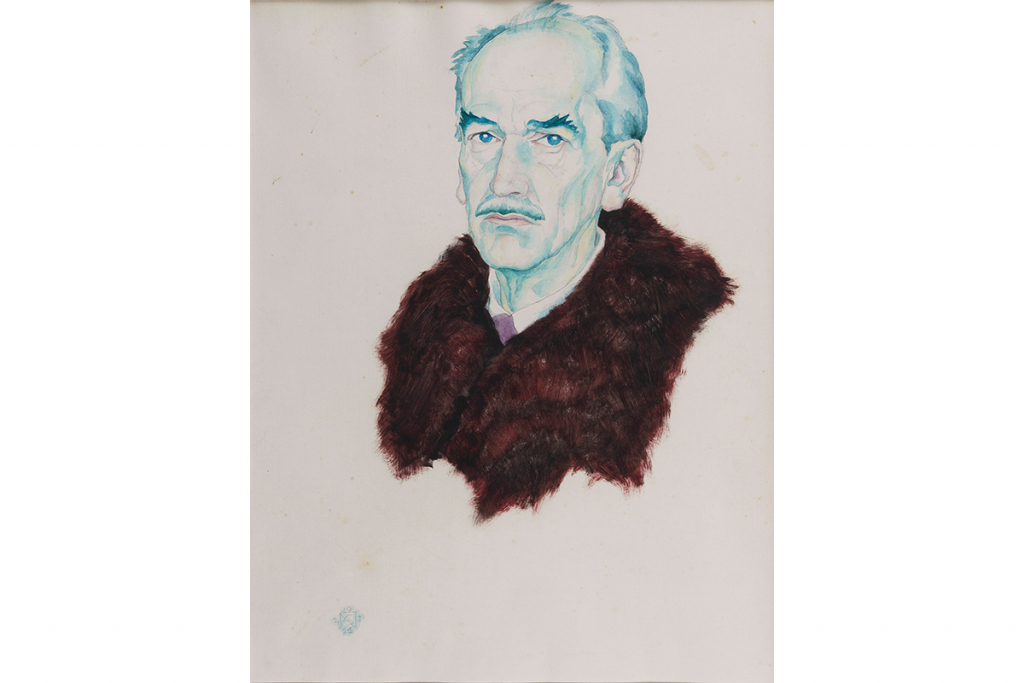
Portrait of a gentleman, 1921 –
©Courtesy: Antonacci Lapiccirella Fine Art ( Rome )
Also Discover: Austrian artist Ernst NEPO‘s “Blue Portraits”, a series strongly inspired by the secessionist environment, with a particular eye on the highly radical style of Egon Schiele, leading exponent of the Expressionist movement.
